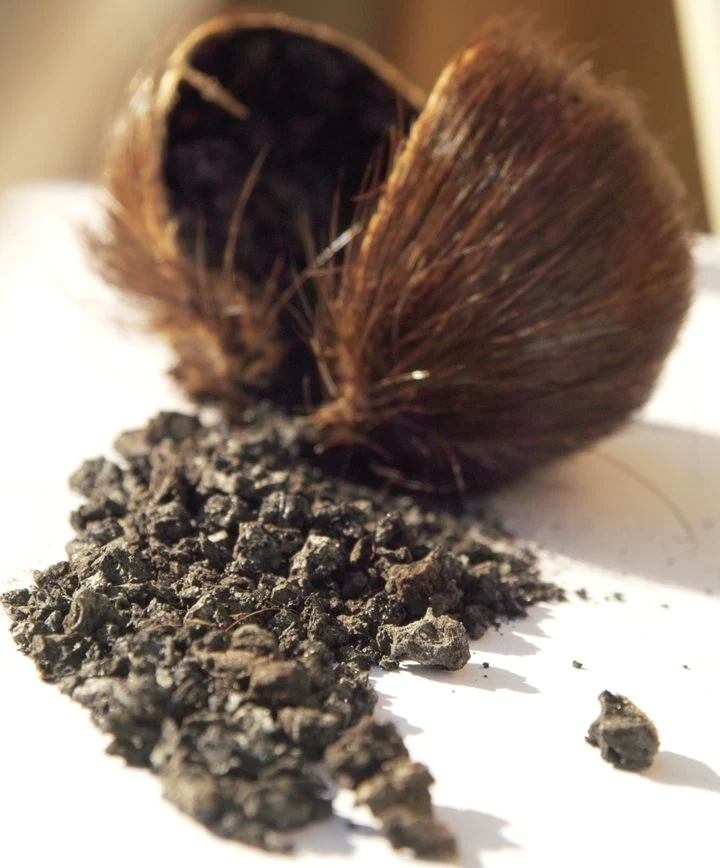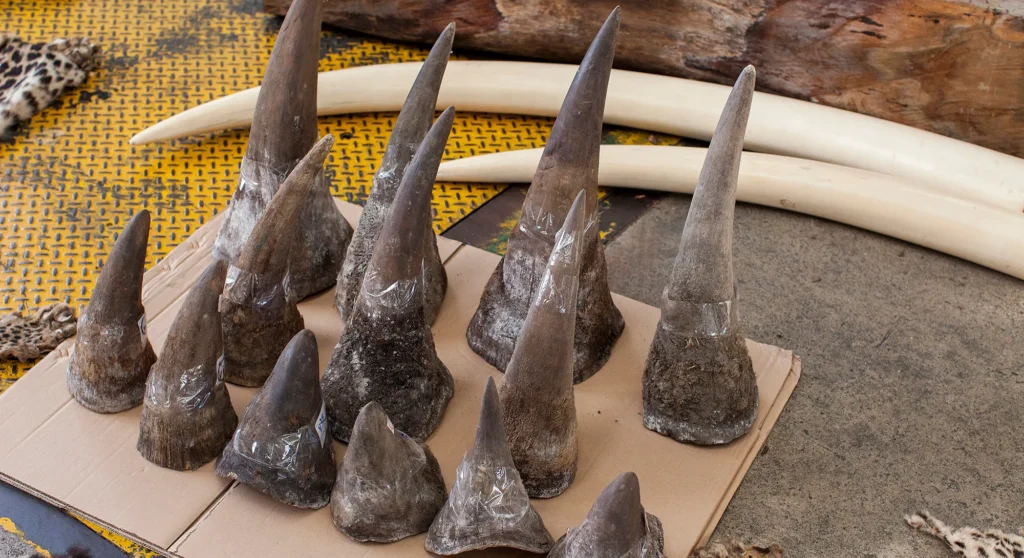Byproducts from wild animals and Sustainable Alternatives
For centuries, various byproducts derived from wild animals have been utilized in human practices, from traditional medicine to fashion and beyond. However, the ethical and environmental implications of harvesting these byproducts have raised concerns. In response, a growing movement seeks sustainable alternatives to minimize the impact on wildlife and ecosystems. This shift reflects a collective effort to find ethical and eco-friendly solutions without compromising on functionality or cultural significance. Let’s explore some key examples of byproducts and their sustainable alternatives, showcasing a path towards harmonizing human practices with the preservation of our planet’s biodiversity.
Byproducts:
1. Ivory:
Ivory is primarily obtained from the tusks of elephants, and historically, it has been used for intricate carvings, jewelry, and various ornamental items. However, the demand for ivory has contributed to illegal poaching, endangering elephant populations and disrupting ecosystems.

Sustainable Alternatives to Ivory:
Vegetable Ivory (Tagua Nut):
Tagua nuts come from certain palm trees and are often referred to as vegetable ivory due to their similar appearance and texture. Harvesting tagua nuts doesn’t harm the trees, making it a sustainable alternative.
Wood:
Many artisans use various types of wood for carving intricate designs. Sustainable forestry practices can ensure a renewable source of materials.
Resin:
Synthetic or plant-based resins can be shaped and carved to resemble ivory. This provides an eco-friendly option without contributing to the demand for real ivory.
Biodegradable Plastics:
Some companies are developing biodegradable plastics as alternatives to traditional plastics, which can be used for decorative purposes.
Recycled Materials:
Using recycled materials, such as recycled glass or plastic, can be an environmentally friendly option for creating artistic pieces without contributing to the demand for ivory.
2. Musk:
Musk traditionally refers to a substance extracted from the musk gland of certain animals, particularly musk deer. It has been used for centuries in perfumes and traditional medicines. However, the use of natural musk has raised ethical and conservation concerns due to the impact on wildlife.

Natural Musk:
Source: Musk is obtained from the musk gland of male musk deer. It’s also found in some other animals, like musk oxen.
Concerns: Harvesting musk often involves killing or harming the animals, leading to conservation issues. Musk deer populations have declined significantly due to hunting and habitat loss.
Sustainable Alternatives to musk:
Synthetic Musk:
Many perfumers and cosmetic companies use synthetic musk, which is created in a laboratory. This eliminates the need to harm animals for musk extraction.
Plant-Based Musk:
Some companies are exploring plant-based alternatives that mimic the scent of natural musk. This can involve extracting fragrances from plants or using bioengineering techniques to produce musk-like compounds.
Ambergris:
While not a direct alternative to musk, ambergris (a substance produced in the digestive systems of sperm whales) has been historically used in perfumes. However, sourcing ambergris also raises ethical concerns, and many modern perfumers use synthetic alternatives.
Lab-Created Fragrances:
Advancements in biotechnology allow for the creation of fragrances that closely resemble natural musk without the need for animal-derived ingredients.
3. Furs and Skins:
Furs and skins, traditionally obtained from animals like foxes, minks, rabbits, and other mammals, have been widely used in the fashion industry. However, the ethical and environmental concerns associated with fur farming and trapping have led to a growing demand for sustainable alternatives.

Natural Furs and Skins:
Source: Furs and skins are obtained through trapping, hunting, or fur farming, where animals are raised specifically for their pelts.
Concerns: Ethical concerns arise due to the treatment of animals in fur farms, the impact on wild animal populations, and environmental issues related to chemical treatments used in processing.
Sustainable Alternatives to Furs and Skins:
Faux Fur:
Faux fur is a synthetic alternative made from various materials such as polyester or acrylic. It mimics the appearance and texture of real fur without the ethical and environmental concerns associated with animal fur.
Plant-Based Leather:
Leather alternatives made from plant-based materials, such as mushroom leather (mycelium), pineapple leather (Piñatex), or apple leather, provide sustainable options without using animal hides.
Recycled Fur:
Some companies repurpose old fur coats and accessories, creating new items from vintage furs. This promotes sustainability by reducing the demand for new fur production.
Lab-Grown Leather:
Advances in biotechnology have led to the development of lab-grown or cultured leather. This involves creating leather-like materials through cellular agriculture without the need for animal slaughter.
Upcycled Materials:
Designers and brands are using innovative approaches by repurposing discarded materials, like reclaimed or upcycled textiles, to create fashionable and sustainable alternatives to traditional furs and skins.
4. Rhino Horn:
Rhino horn is a highly sought-after commodity, particularly in some traditional Asian medicine practices, where it is believed to have healing properties. However, the trade in rhino horn has contributed significantly to the decline in rhino populations, making these magnificent creatures highly endangered.

Natural Rhino Horn:
Source: Rhino horn is composed of keratin, the same substance found in human hair and nails. Rhinos are poached for their horns, primarily in Africa and Asia.
Concerns: Rhino poaching is a major threat to rhino populations. The high demand for rhino horn, driven by traditional beliefs and illegal trade, has led to a significant decline in rhino numbers.
Sustainable Alternatives to Rhino Horn:
Synthetic Rhino Horn:
Some initiatives are exploring the creation of synthetic rhino horn using materials like keratin or other substitutes. These synthetic horns can resemble the appearance of natural rhino horn, providing an ethical alternative without contributing to poaching.
Community-Based Conservation:
Supporting community-based conservation efforts, such as eco-tourism and responsible wildlife management, can help generate income for local communities while promoting the protection of rhinos in their natural habitats.
Education and Awareness:
Educating communities about the true composition of rhino horn and dispelling myths about its medicinal properties can reduce the demand for real rhino horn.
Anti-Poaching Measures:
Implementing and supporting stringent anti-poaching measures, along with international collaboration to combat the illegal wildlife trade, are essential for the conservation of rhino populations.
Rhino Rehabilitation Programs:
Initiatives that focus on rehabilitating and reintroducing rhinos into protected areas can contribute to the recovery of rhino populations.
5. Shark Fin Soup:
Shark fin soup is a traditional Chinese delicacy that has become highly controversial due to its impact on shark populations and the overall health of marine ecosystems. Shark finning involves catching sharks, removing their fins, and discarding the rest of the body at sea. This practice is ecologically harmful and has led to a significant decline in shark populations.

Shark Fin Soup:
Source: Shark fin soup is made by using the dried fins of sharks, often obtained through the cruel practice of finning.
Concerns: Shark finning is associated with significant environmental and ethical issues. It depletes shark populations, disrupts marine ecosystems, and contributes to the decline of various shark species.
Sustainable Alternatives to Shark Fin Soup:
Faux Shark Fin Soup: Many chefs and restaurants offer faux shark fin soup made with alternative ingredients that mimic the texture and appearance of real shark fins. These alternatives are often plant-based or made from other sustainable sources.
Seafood Watch Programs: Consumers can use seafood watch programs, such as those provided by organizations like the Monterey Bay Aquarium, to make informed choices about sustainably sourced seafood, including shark-friendly options.
Supporting Sustainable Fishing Practices: Choosing seafood from fisheries that follow sustainable practices and adhere to regulations helps reduce the impact on shark populations. Look for certifications like Marine Stewardship Council (MSC) for sustainably sourced seafood.
Promoting Shark Conservation: Supporting organizations and initiatives dedicated to shark conservation helps raise awareness and contribute to efforts to protect these crucial marine species.
Educating Consumers: Raising awareness about the environmental consequences of shark finning and the decline in shark populations helps encourage consumers to make more sustainable choices.